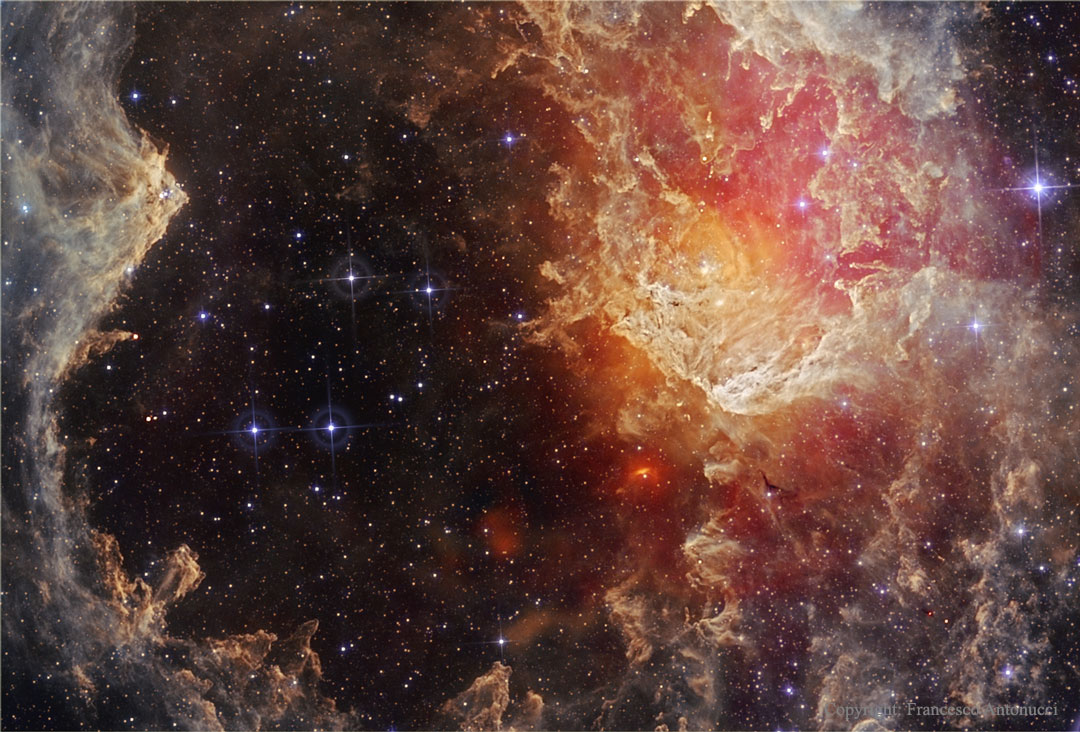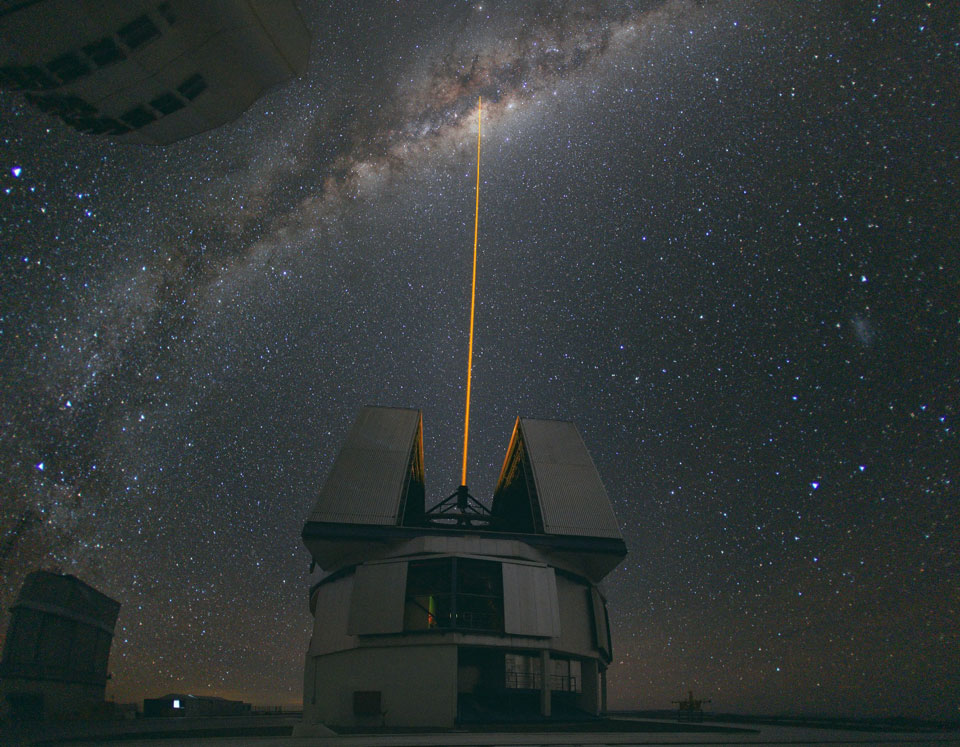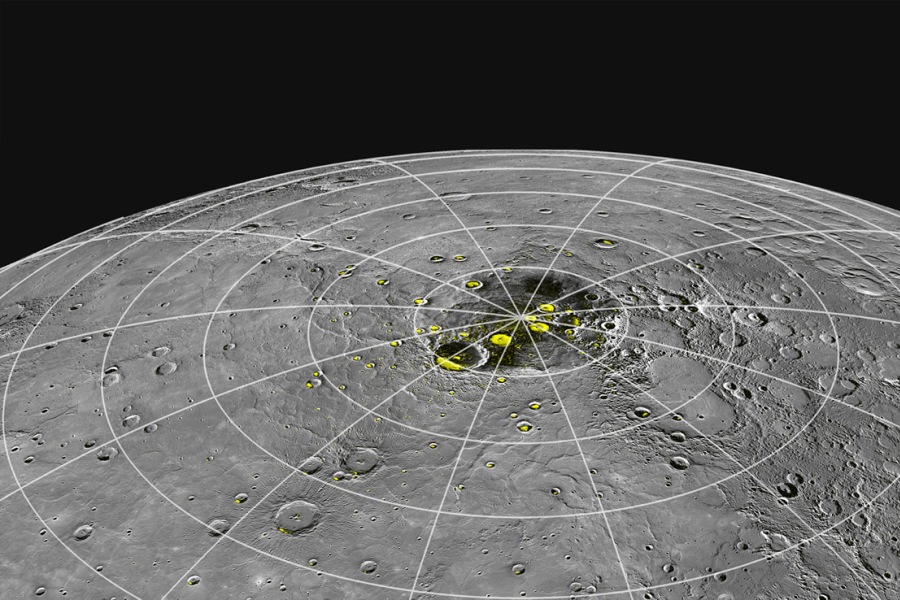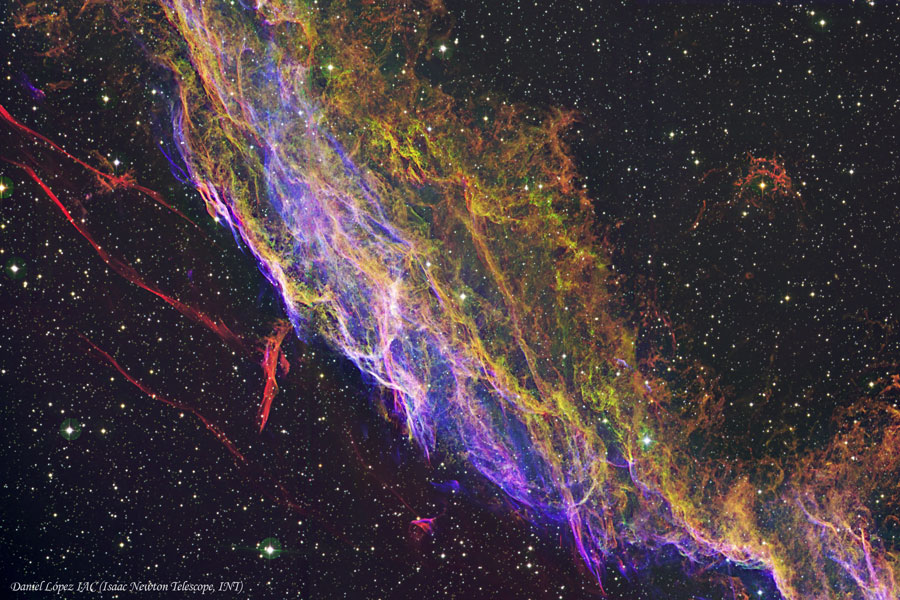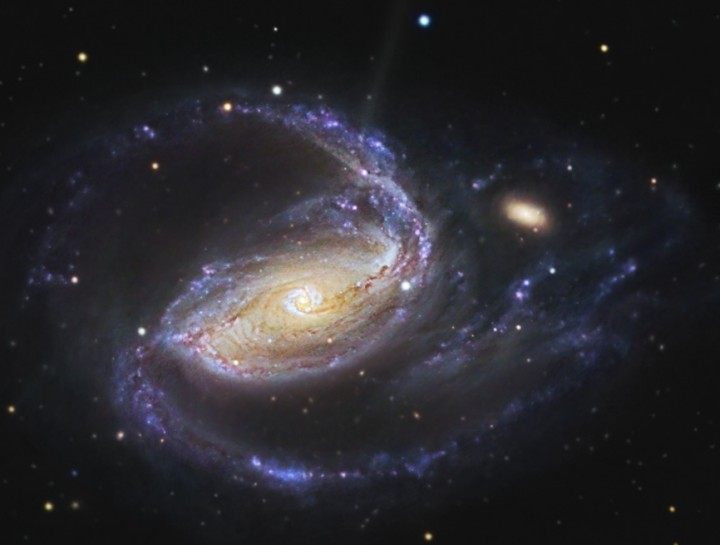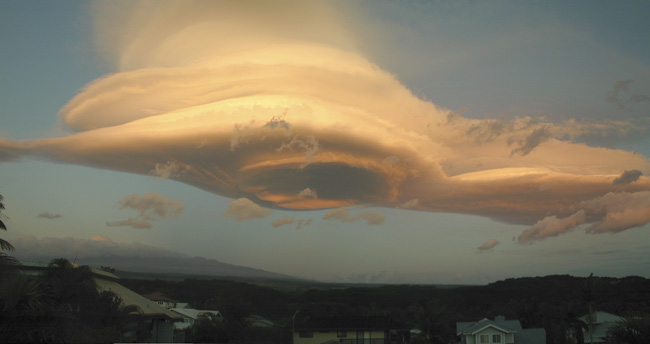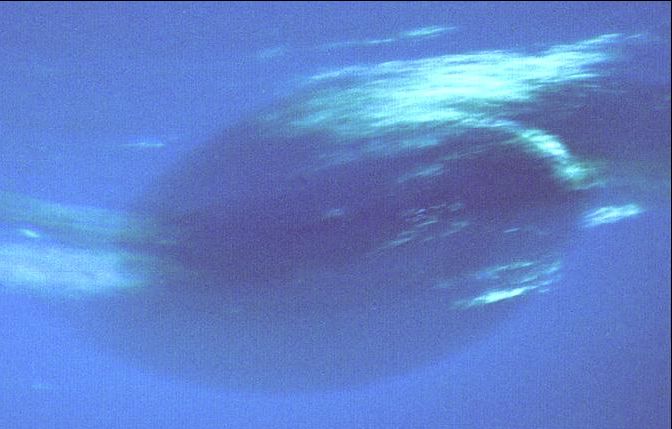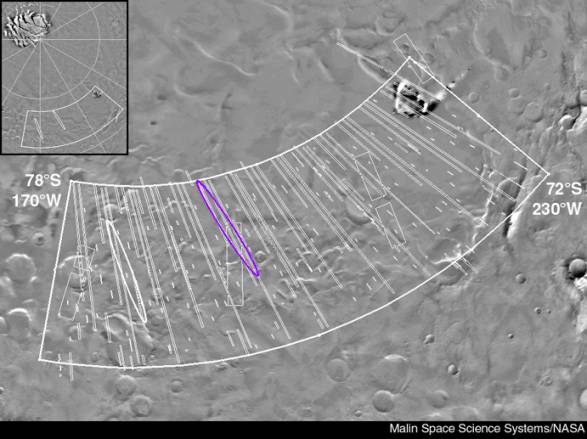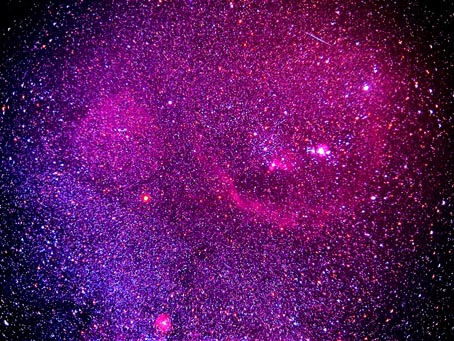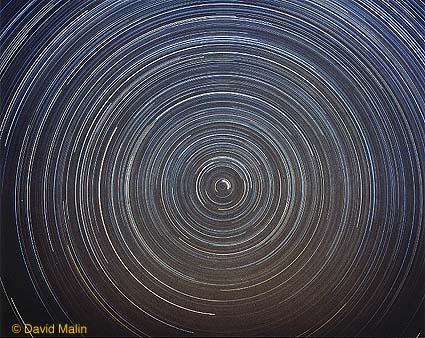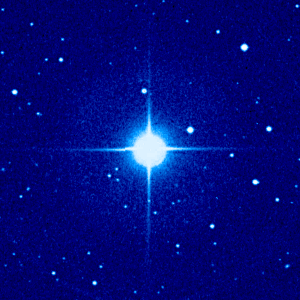| << Previous | Index | Next >> |
2014 Hot, young stars and cosmic pillars of gas and dust seem to crowd into NGC 7822. At the edge of a giant molecular cloud toward the northern constellation Cepheus, this glowing star forming region lies about 3,000 light-years away. Within the nebula, bright edges and complex dust sculptures dominate this detailed skyscape taken in infrared light by NASA's Wide Field Infrared Survey Explorer (WISE) satellite. The atomic emission by the cluster's gas is powered by energetic radiation from the hot stars, whose powerful winds and light also sculpt and erode the denser pillar shapes. Stars could still be forming inside the pillars by gravitational collapse, but as the pillars are eroded away, any forming stars will ultimately be cut off from their reservoir of star stuff. This field spans around 40 light-years at the estimated distance of NGC 7822.
2013 Why are these people shooting a powerful laser into the center of our Galaxy? Fortunately, this is not meant to be the first step in a Galactic war. Rather, astronomers at the Very Large Telescope (VLT) site in Chile are trying to measure the distortions of Earth's ever changing atmosphere. Constant imaging of high-altitude atoms excited by the laser -- which appear like an artificial star -- allow astronomers to instantly measure atmospheric blurring. This information is fed back to a VLT telescope mirror which is then slightly deformed to minimize this blurring. In this case, a VLT was observing our Galaxy's center, and so Earth's atmospheric blurring in that direction was needed. As for inter-galaxy warfare, when viewed from our Galaxy's center, no casualties are expected. In fact, the light from this powerful laser would combine with light from our Sun to together appear only as bright as a faint and distant star.
2012 Innermost planet Mercury would probably not be a good location for an interplanetary winter olympics. But new results based on data from the Mercury orbiting MESSENGER spacecraft indicate that it does have substantial water ice in permanently shadowed regions within craters near its north pole. The possibility of ice on Mercury has been entertained for years, inspired by the discovery of radar bright, hence highly reflective, regions near the north pole. Highlighted in yellow in this map based on projected MESSENGER images, radar bright regions are seen to correspond with floors and walls of north polar impact craters. Farther from the pole the regions are concentrated on the north facing crater walls. MESSENGER's neutron spectroscopy and thermal models for the craters indicate material in these regions has a hydrogen content consistent with nearly pure water ice and is trapped in an area with temperatures that remain below 100 kelvins (-280 deg.F, -173 deg.C). In circumstances similar to permanent shadows in craters of the Moon, debris from comet impacts is thought to be the source of ice on Mercury.
2011 Now appearing as planet Earth's evening star, brilliant Venus shines in western skies at twilight. Standing above a rugged horizon and warm sunset colors, the twilight's celestial beacon was joined last Saturday by a Moon 35 hours young in this gorgeous skyscape. The close pairing of Venus and Moon is known as a conjunction. Not visible in the frame, fleeting planet Mercury has fallen from evening skies, sinking deeper into the sunset glow below the young crescent Moon. The scene was captured while trekking in northern Portugal's Peneda-Geres National Park.
2010 Why is Phobos so dark? Phobos, the largest and innermost of two Martian moons, is the darkest moon in the entire Solar System. Its unusual orbit and color indicate that it may be a captured asteroid composed of a mixture of ice and dark rock. The above picture of Phobos near the limb of Mars was captured last month by the robot spacecraft Mars Express currently orbiting Mars. Phobos is a heavily cratered and barren moon, with its largest crater located on the far side. From images like this, Phobos has been determined to be covered by perhaps a meter of loose dust. Phobos orbits so close to Mars that from some places it would appear to rise and set twice a day, but from other places it would not be visible at all. Phobos' orbit around Mars is continually decaying -- it will likely break up with pieces crashing to the Martian surface in about 50 million years.
2009 Wisps like this are all that remain visible of a Milky Way star. About 7,500 years ago that star exploded in a supernova leaving the Veil Nebula, also known as the Cygnus Loop. At the time, the expanding cloud was likely as bright as a crescent Moon, remaining visible for weeks to people living at the dawn of recorded history. Today, the resulting supernova remnant has faded and is now visible only through a small telescope directed toward the constellation of the Swan (Cygnus). The remaining Veil Nebula is physically huge, however, and even though it lies about 1,400 light-years distant, it covers over five times the size of the full Moon. In images of the complete Veil Nebula, studious readers should be able to identify the above filaments on the lower left. The above image is a mosaic from the 2.5-meter Isaac Newton Telescope at Roque de los Muchachos Observatory in the Canary Islands.
2008 How massive can stars be? Big, hefty stars live short violent lives that can profoundly affect their environments. Isolating a massive star can be problematic, however, since what seems to be a single bright star might actually turn out to be several stars close together. Such was the case for two of the brightest objects visible in the open star cluster Trumpler 16, located in the southern Carina Nebula. Upon close inspection by the Hubble Space Telescope, WR 25, the brightest object in the above image, was confirmed to consist of at least two separate stars. Additionally, Tr16 -244, just to the upper right of WR 25, was resolved for the first time to be at least three individual stars. Even so, the brightest star in WR 25 appears to be about 50 times the mass of our Sun, making it one of the more massive stars known. Winds from these stars are likely significant contributers to the large bubble that the star cluster sits in. The Carina Nebula, home to unusually shaped dust clouds and the famous variable star Eta Carina, lies about 7,500 light years away toward the constellation of Ship's Keel (Carina).
2007
2006 A smaller companion seems wrapped in the spiral arms of enigmatic galaxy NGC 1097. This amazingly deep image of the peculiar spiral system, also known as Arp 77, actually combines data from two telescopes, one in the northern and one in the southern hemisphere of planet Earth. The faint details revealed include hints of a mysterious jet emerging toward the top of the view. Seen to be about 42,000 light-years from the larger galaxy's center, the companion galaxy is gravitationally interacting with the spiral and will ultimately merge with it. NGC 1097's center also harbors a massive black hole. NGC 1097 is located about 45 million light-years away in the chemical constellation Fornax.
2005 Launched ten years ago this week, SOHO (the SOlar and Heliospheric Observatory) still enjoys an uninterrupted view of the Sun. Twelve sungazing instruments on board the spacecraft have explored the Sun's internal structure, the extensive solar atmosphere and solar wind, and discovered over 1,000 comets from a remarkable orbit around a point about 1.5 million kilometers directly sunward of planet Earth itself. At that location, known as a Lagrange point, the gravitational influence of the Earth and Sun are equal. With scientific instrument teams distributed around the world, the SOHO operations center is located at NASA's Goddard Space Flight Center in Greenbelt, Maryland. Mission operations are planned through March of 2007 to allow the study of a complete 11-year solar cycle. Contributions from SOHO's instruments are represented in the colorful montage image. Happy tenth anniversary SOHO!
2004 What causes the bright streaks on Dione? Recent and likely future images of this unusual moon by the robot Cassini spacecraft now orbiting Saturn might help us find out. The above image was taken at the end of October from a distance of about one million kilometers. The bright streaks run across some of Dione's many craters, indicating that the process that created them occurred later than the impacts that created those craters. Dione is made of mostly water ice but its relatively high density indicates that it contains much rock inside. Giovanni Cassini discovered Dione in 1684. The Cassini spacecraft is scheduled to photograph Dione at higher resolution in mid-December. Currently, the highest resolution images of Dione remain those taken by the passing Voyager spacecraft in 1980.
2003 Can a cloud do that? Actually, pictured above are several clouds all stacked up into one striking lenticular cloud. Normally, air moves much more horizontally than it does vertically. Sometimes, however, such as when wind comes off of a mountain or a hill, relatively strong vertical oscillations take place as the air stabilizes. The dry air at the top of an oscillation may be quite stratified in moisture content, and hence forms clouds at each layer where the air saturates with moisture. The result can be a lenticular cloud with a strongly layered appearance. The above picture was taken last week near Mauna Kea, Hawaii, USA.
2002 It is the most famous star cluster on the sky. The Pleiades can be seen without binoculars from even the depths of a light-polluted city. Also known as the Seven Sisters and M45, the Pleiades is one of the brightest and closest open clusters. The Pleiades contains over 3000 stars, is about 400 light years away, and only 13 light years across. Quite evident in the above photograph are the blue reflection nebulae that surround the bright cluster stars. Low mass, faint, brown dwarfs have recently been found in the Pleiades.
2001 When NASA's Voyager 2 spacecraft flew by distant Neptune in August of 1989, astronomers were shocked. Since Neptune receives only 3 percent the sunlight Jupiter does, they expected to find a dormant, dark, frigid planet. Instead, the Voyager images revealed evidence of a dynamic and turbulent world. One of the most spectacular discoveries was of the Great Dark Spot, shown here in close-up. Surprisingly, it was comparable in size and at the same relative southern latitude as Jupiter's Great Red Spot, appearing to be a similar rotating storm system. Winds near the spot were measured up to 1500 miles per hour, the strongest recorded on any planet. The Voyager data also revealed that the Great Dark Spot varied significantly in size during the brief flyby. When the Hubble Space Telescope viewed the planet in 1994, the spot had vanished -- only to be replaced by another dark spot in the planet's northern hemisphere!
2000 In the martian southern hemisphere, autumn has arrived. As on planet Earth, the cooler temperatures bring a seasonal frost to the landscape. Of course on Mars, the surface temperatures can be really cool, reaching below minus 100 degrees C. This detailed Mars Global Surveyor synthesized color image of Lowell crater at 52 degrees south martian latitude was recorded on October 17. Whitish frost has begun to accumulate on floor of the 201 kilometer wide crater. The crater's weathered walls suggest Lowell is relatively old. In striking contrast, two smaller, sharp-rimmed young craters are clearly superimposed on the older features near Lowell's outer rim.
1999 The latest invader from Earth, the Mars Polar Lander (MPL) spacecraft, is scheduled to touch down on the Red Planet's surface on Friday, December 3rd. If all goes well the robotic explorer will open a parachute, deploy landing legs, fire thrusters, and come to rest amidst rolling plains of intriguing layered terrain near the Martian South Pole. In this orbital image, a grid overlays the landing region with the targeted site indicated by a purple oval about 200 kilometers long by 20 kilometers wide. A secondary landing site is shown as a white oval while at the upper left an inset shows the area in relation to the pole. This polar landing region's layered terrain will hopefully allow MPL's instruments to view a record of climate changes in Martian history, like reading tree rings or layers in an ice core. Before landing, MPL will drop off two microprobes intended to penetrate the soil and look for water ice. Mars Polar Lander will also carry a small Mars Microphone.
1998 Some galaxies are hard to find. Besides being hidden behind the dust and bright foreground stars of our Milky Way Galaxy, recently discovered Cepheus 1 was missed previously because it is so uniformly dim. In fact, the first indication that any galaxy was there at all came in the radio band from the Dwingeloo radio telescope in the Netherlands. Close inspections of optical photographs like the one above then revealed Cepheus 1 as the low-surface brightness galaxy in the center. Cepheus 1 turns out to be only about 20 million light years distant, and so is one of the few spiral galaxies that live close by. Low-surface brightness (LSB) galaxies like Cepheus 1 are still being studied, but are known to have relatively large separations between bright stars, and to be more commonly found away from other galaxies.
1997 Orion is big. Some of the stars that form the constellation of Orion are part of a giant gas cloud complex that stretches over 100 light years and appears more than 50 times the diameter of the Moon. Components of this cloud include the Horsehead Nebula, the Orion Nebula, the Trapezium open cluster, and small disks containing stellar systems which are just forming. At 1500 light years, Orion is the closest star forming region to Earth. Close inspection of the photo's center should reveal the three stars which form the belt of Orion.
1996 As the Earth spins on its axis, the sky seems to rotate around us. This motion produces the beautiful concentric arcs traced out by the stars in this time exposure of the night sky. In the middle of the picture is the North Celestial Pole (NCP), easily identified as the point in the sky at the center of all the star trail arcs. The very short bright trail near the NCP was made by the star Polaris, commonly known as the North Star.
1995
| << Previous | Index | Next >> |
